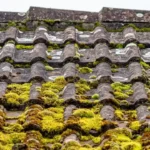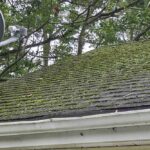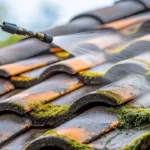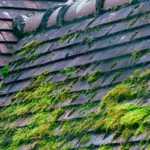The roof moss salt method has gained popularity among homeowners seeking an effective way to deal with moss on their roofs. This method is not only cost-effective but also easy to implement, making it an attractive option for those looking to maintain their roof’s integrity. In this article, we will explore the ins and outs of using salt to combat roof moss, ensuring your home remains in top condition.

What is the Roof Moss Salt Method?
The roof moss salt method involves using salt as a natural deterrent to prevent moss growth on roofs. By applying a salt solution to the affected areas, homeowners can effectively kill existing moss and prevent new growth. This method is favored for its simplicity and accessibility, as salt is a common household item.
How Does Moss Affect Your Roof?
Moss can cause significant damage to roofs if left untreated. It retains moisture, which can lead to the decay of roofing materials over time. Additionally, moss can lift shingles, creating gaps that allow water to penetrate the underlying structure. This can result in leaks and costly repairs. For more on how moss affects your roof, visit moss vs algae.
Benefits of Using the Roof Moss Salt Method
- Cost-effective: Salt is an inexpensive solution compared to other moss removal products.
- Easy to Apply: The method is simple enough for most homeowners to perform without professional assistance.
- Eco-friendly: Unlike harsh chemicals, salt is a natural substance that poses less risk to the environment.
Preparing Your Roof for Treatment
Safety First
Before applying the roof moss salt method, ensure you take necessary safety precautions. Use a sturdy ladder, wear non-slip shoes, and consider using safety harnesses if your roof is particularly steep.
Cleaning the Roof
Remove any debris and loose moss using a broom or leaf blower. This will allow the salt solution to reach the moss more effectively. For more tips on preparing your roof, check out DIY budget tips.
Creating the Salt Solution
To create the salt solution, mix one part salt with three parts water in a large bucket. Stir until the salt is fully dissolved. This concentration is effective in killing moss without causing damage to your roof.
Applying the Salt Solution
Using a garden sprayer, apply the salt solution evenly across the moss-affected areas of your roof. Be sure to cover all areas thoroughly, as any missed spots may allow moss to regrow.
Monitoring and Maintenance
After applying the roof moss salt method, monitor your roof for regrowth. Reapply the solution as needed, typically every six months, to maintain a moss-free roof. For more on long-term maintenance, visit roof maintenance tips.
Potential Drawbacks
While the roof moss salt method is effective, it’s important to be aware of potential drawbacks. Excessive use of salt can lead to corrosion of certain roofing materials, so it’s crucial to follow recommended application guidelines. Additionally, salt runoff may affect surrounding plants, so take care to rinse any foliage that comes into contact with the solution.
Alternative Methods
If the roof moss salt method is not suitable for your home, consider alternative methods such as using commercial moss killers or hiring a professional cleaning service. For help deciding, see our guide on DIY vs professional cleaning.
Frequently Asked Questions
1. How often should I apply the roof moss salt method?
It is recommended to apply the method every six months to prevent moss regrowth.
2. Will the salt solution harm my plants?
While the solution can harm plants, rinsing any affected foliage with water can mitigate damage.
3. Can I use table salt for this method?
Yes, table salt is suitable for creating the salt solution.

Conclusion
The roof moss salt method offers an accessible and effective solution for homeowners looking to keep their roofs free of moss. By following the steps outlined in this guide, you can maintain your roof’s health and longevity. For additional insights into moss growth, visit why moss grows on roofs.
This article contains affiliate links. We may earn a commission at no extra cost to you.








